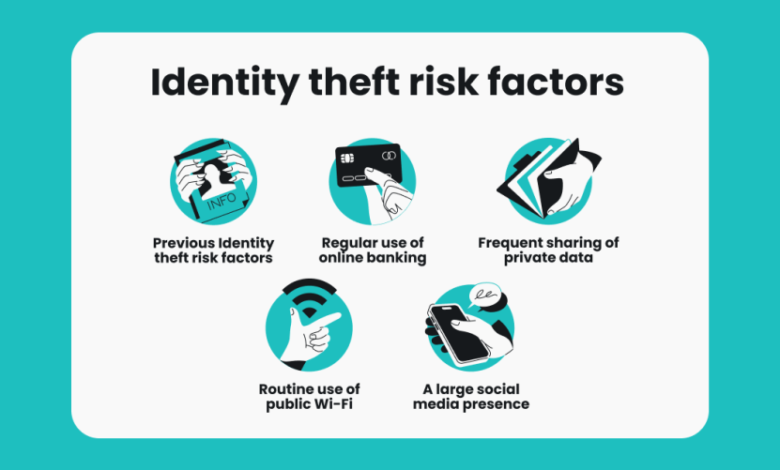How to Prevent Identity Theft: Practical, Trusted Tips

Table of Contents
Introduction
In today’s digital world, identity theft is one of the fastest-growing crimes. It happens when someone steals your personal information—like your Social Security number, bank details, or other sensitive data—and uses it without permission. The damage can be severe: drained bank accounts, ruined credit, and months of stress trying to recover.
The good news is that most cases of identity theft can be prevented with simple habits and awareness. This guide gives you clear, expert-backed, and trustworthy strategies to keep your identity safe. By learning how thieves operate, what warning signs to look for, and what protective steps to take, you’ll be far less likely to become a victim.
What Is Identity Theft?
Identity theft is when a criminal impersonates you by using your personal or financial information. They may:
- Open new credit cards or loans in your name.
- Drain your bank account.
- File false tax returns.
- Use your identity for medical services or government benefits.
- Sell your personal data on the black market.
It’s more than just money—it can affect your credit score, job opportunities, and emotional well-being.
Why Prevention Matters
- Financial safety: Prevents fraudulent charges and unauthorized loans.
- Credit protection: Keeps your credit score clean and trustworthy.
- Peace of mind: Reduces stress and saves countless hours of recovery.
- Long-term security: Once your information is stolen, it can circulate for years. Prevention is always easier than recovery.
Practical Identity Theft Prevention Strategies
1. Secure Your Personal Documents
- Shred old bank statements, bills, and receipts before throwing them away.
- Store passports, Social Security cards, and other critical documents in a locked place.
- Never carry unnecessary personal information in your wallet.
2. Use Strong Passwords and Multi-Factor Authentication
- Create long, unique passwords with a mix of letters, numbers, and symbols.
- Avoid reusing passwords across different accounts.
- Enable multi-factor authentication (MFA) wherever possible, especially for banking and email.
3. Keep Your Devices and Software Updated
- Regularly update your operating system, apps, and antivirus software.
- Secure your Wi-Fi with strong encryption and a strong password.
- Avoid downloading apps or attachments from unknown sources.
4. Be Alert to Phishing and Scams
- Don’t click on suspicious links or open unexpected attachments.
- Verify phone calls, texts, or emails that request sensitive information.
- Check websites for security (look for “https” in the URL) before entering details.
5. Monitor Your Financial Accounts and Credit
- Review bank and credit card statements monthly.
- Order your credit reports regularly to check for unfamiliar accounts.
- Set up account alerts to detect suspicious activity early.
6. Limit What You Share Online
- Be mindful about posting your birthdate, address, or family details on social media.
- Avoid quizzes or games that ask personal questions.
- Share sensitive data only when absolutely necessary.
7. Consider Identity Protection Services
- Some services provide credit monitoring, dark-web scanning, and recovery assistance.
- While not a replacement for good habits, they add an extra layer of defense.
What To Do If Identity Theft Happens
Even the most careful person can fall victim. Here’s what to do immediately:
- Document everything – Keep records of suspicious charges, messages, or bills.
- Contact financial institutions – Freeze accounts or cards that have been compromised.
- Report to authorities – File a police report and notify the relevant consumer protection agency.
- Place a credit freeze or fraud alert – This stops thieves from opening new accounts in your name.
- Check your credit reports – Dispute fraudulent entries and correct your record.
- Change passwords and enable MFA – Especially on email, banking, and financial apps.
- Continue monitoring – Keep an eye on your accounts and credit for ongoing suspicious activity.
Special Situations
- Children: Children’s identities are valuable to thieves because they can go undetected for years. Freeze your child’s credit and monitor for unusual mail.
- Travelers: Be cautious with documents and avoid public Wi-Fi for banking. If needed, use a secure VPN.
- Mail safety: Collect mail daily, use a locked mailbox, and shred junk mail containing personal info.
Read More: https://shoppingandreview.com/crypto30x-com-can-you-really-get-30x/
Conclusion
Identity theft can strike anyone, but prevention is within your control. By protecting your documents, practicing safe online habits, using strong passwords with multi-factor authentication, and monitoring your accounts regularly, you reduce your risk dramatically. Prevention also means being careful with what you share publicly and staying alert to scams.
If theft does occur, fast action—like freezing your credit, reporting the incident, and changing passwords—can limit damage and speed recovery.
Think of identity protection as a daily habit, like locking your front door. Small, consistent steps safeguard your financial future, protect your credit, and give you peace of mind. Staying informed, proactive, and alert is the smartest defense against identity thieves.
FAQs
1. How can I tell if someone has stolen my identity?
Watch for unusual bank transactions, accounts you didn’t open, missing bills, calls from debt collectors, or sudden drops in your credit score.
2. What is the best way to protect my online accounts?
Use unique passwords for each account, enable multi-factor authentication, keep your software updated, and avoid logging in on public networks.
3. Should I use identity theft protection services?
They can provide alerts and recovery support, but they don’t replace good personal habits like checking credit reports and practicing online safety.
4. What should I do if I suspect identity theft?
Document the evidence, notify your bank and creditors, file a police report, freeze your credit, and monitor your accounts closely.
5. How often should I check my credit report or bank statements?
Check bank statements monthly and review your credit reports at least once a year. More frequent checks are recommended if you suspect suspicious activity.



